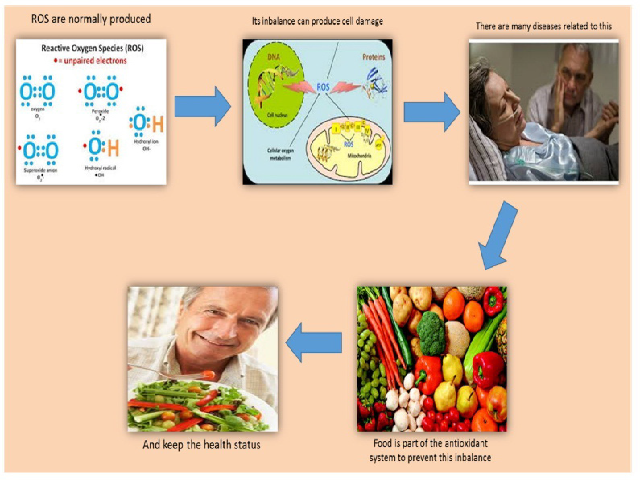Antioxidant Capacity of Food
DOI:
https://doi.org/10.5530/fra.2016.1.1Keywords:
Antioxidants, Food, Reactive oxygen species, Oxidative stress, Methods to assess the antioxidant capacity, Mexican foodAbstract
Reactive oxygen species (ROS) are usually produced by the living cell and have different functions in its normal activity. However, if they are produced excessively, or if the system that keeps them in controlled levels is deficient or insufficient, a phenomenon known as oxidative stress is produced. This is related to the aging process and the onset and development of several diseases as well as their complications such as endothelial dysfunction in cardiovascular disease concomitant with the oxidation of low density lipoproteins and aggravated by smoking, the appearance of advanced glycosylation end products in diabetes mellitus. In neurodegenerative disorders such as Alzheimer’s disease, neuron plasma membrane malfunction is caused by phospholipids peroxidation, leading to cell death.Cancer develops from genetic mutations resulting from DNA damage.Taking this into account, several antioxidant properties have been studied in different foods, beverages and spices, including their relationship with the prevention of degenerative diseases. Antioxidants obtained through diet can act in different ways: first, preventing the excess of free radicals, thus avoiding oxidative damage to the cell. Secondly, after damage has occurred, antioxidants can control free radical levels preventing further damage thereby alleviating some symptoms caused by oxidative stress. In this review, some basic concepts of reactive oxygen species, oxidative stress and antioxidants are analyzed, as well as some of the direct and indirect methods used to assess the antioxidant capacity of foods. Some of the food highly consumed by the Mexican population has antioxidant capacity and it is herein summarized.
Downloads
Metrics





